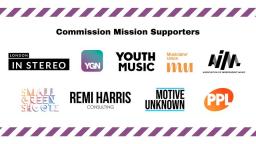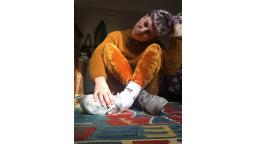
Times like these leave us with no choice but to innovate, and livestreaming could be the future.
Written by Madeline Wrench - as part of Commission Mission.
Ever had dreams of providing a platform for all the great musicians and artists you know and love, but not had the budget or know-how to get it off the ground? Are you sitting at home desperately dreaming of portaloos, being sunburnt to a crisp and chatting breeze with a rowdy Scouse lad with a bumbag round his neck, as the bass from the nearby stage makes your hair stand on end?
Fear no more, because the summer may officially be on hiatus, but festivals are catching up fast. Lockdown has plunged the events industry into chaos, with the future looking uncertain for many. Times like these leave us with no choice but to innovate, and livestreaming could be the future.
Sites like Hopin and Twitch are championing live digital events as a solution to many of the dilemmas the industry faces: accessibility, environmental impact and monetary costs are all headaches that virtual reality could diminish. Live streaming may not quite have the same panache as rolling around a field with your mates and diving into a sweaty crowd, but with low overhead costs, unprecedented global reach and a captive home audience, this could be an opportunity to level the playing field far beyond Covid-19.
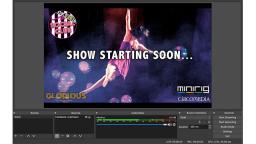
Below we've outlined the basic steps to setting up your very own virtual festival, with insights from the head honchos at some inspirational UK events. Whilst you will need access to some software and technology, the vast majority is freely available online, and we've deliberately tried to keep it simple, cheap and accessible.
1. The Vision
First, you need to decide what kind of event you're actually putting on. Maybe you already have one, and you want to convert it into a digital format? You might be working on a brand new idea, or one you've had for ages. We'll be concentrating on music-focused streams, but you can apply this framework to any format.
2. Target Market/Audience
This is one of the most important aspects of curating a festival. The audience you're appealing to will decide upon many other factors - the variety of acts, when the festival takes place, how many people will attend, who will headline... basically how successful the entire event will be. Annabelle Holland, producer and creative director for Shambala's Social Club, says:
“Make a business plan. Are you aiming it at the right demographic? What do they want? Are you meeting the audience's expectations? Live streaming is great because you can reach so many more people than if you were running an outdoor festival. If you think of how many people could fit into a tent, say 400, that’s potentially limitless online. People can watch while they’re cooking dinner and make an event of it at home."
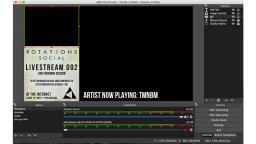
Once you've found your target market, you need to ensure the people who lock in to your stream are going to stay. This requires you to think about how the stream is going to look from their point of view- the cameras, the audio, the lighting. People want to make connections, meet friends and be silly with each other. They want it to feel like a party.
Having a chat room is a feature of most streaming sites, which really gives the audience chance to connect with each other and the acts they're watching. If the chat room's popping off and you're engaging the crowd, then that's huge. Annabelle Holland, Shindig director Simon Clarke and Rotations visionary Ru Brooks give us their tips for keeping viewers locked in:
“Our event is called Rotations Social, so the social aspect is key. It's a networking hangout more than anything else, so to be able to still call it that, it had to have the same format and be as interactive.” - Ru Brooks.
“We did most of our interactive stuff through social media, and got people to tag us. We had a fancy dress theme so the punters had something to engage them all the way through. We had two comperes who did a live judging slot, a quiz that was hosted by Too Many Ts, and Huey Morgan read a bedtime story for the kids.[...] Keeping it simple and smooth is more important than anything. The visual aspect is great, and people love it, but if it’s a music event, they’re just listening. They’re probably listening on some little speakers at home, so it’s about putting yourself in their shoes and making sure your event works in a normal home setting.” - Simon Clarke.
“We wanted it to feel like a normal night at the social club. The beauty of the livestream is that you can heckle us and we’ll never know!”- Annabelle Holland
3. Programming
Is it music-based? If so, are you going to have live acts, or just DJs? Do you want to include other performances, such as circus, spoken-word, theatre, or workshops? It's here that you can start booking acts and thinking about the programming. Merlin Bolton-Smith directed and produced the Cabaret for Shindig festival's wildly successful livestream in May. She says:
“It's a totally different medium to the live show. Our cabaret is normally over an hour, but online audiences have a shorter attention span, so keeping it snappy is good. The general rules of programming a cabaret are that you start with your second-best act and finish with your best. Anything you're not sure about, you sandwich between a couple of things you know are gonna pop.”
4. The Date
It goes without saying that weekends work best for pulling in a larger crowd, but you need to consider how many other events are taking place on that date, whether you're covering different time zones and how long it's going to take you to promote and organise the event and your performers.
They're going to need a decent amount of notice, especially if you want them to perform something unique to you. Shindig postponed their live event until September, but held a livestream on the original date in April instead. Director Simon Clarke reveals how they garnered upwards of 26,000 views:
“We hadn't counted on the credibility of just holding it on our original dates. The people that had bought tickets had already booked it off work, so they could just tune in and watch. We saw a lot of promoters who'd had events cancelled in the summer put on livestreams in March, and they just didn't get the traction they should've.”
5. Marketing.
How are you going to build your brand? Are you able to spend money on promotion? If you're just organising something for friends, then sure, an event page is fine, but if you're planning on appealing to a larger audience, it's worth setting up your own business page and paying the small fees that social media sites charge to boost your posts.
It's also important to develop relationships with potential sponsors, who will allow you to cross-post on their pages. Ru Brooks founded Rotations, a Bristol-based drum and bass collective who hold socials every month, to connect talented, unsigned artists with spicy labels. Now running the show virtually, Ru tells us about the importance of forming mutually beneficial relationships in the industry:
“We always try to reach out to people or brands who have a vested interest in what we're doing. Cross-posting is an agreement that allows you to post on social media on their behalf. They benefit from activity on their page and we gain access to thousands more potential viewers. The reach is massive.”
For existing festivals, Simon Clarke recognises the potential for using the livestream itself as a marketing tactic; “The scope for publicity is huge, you can boost your audience figures enormously. For existing events it’s like a massive TV ad, basically. Advertising a festival during lockdown is pretty irresponsible and also insensitive, so this is a good way of navigating that.”
6. Technology.
What level of technology do you and your performers have available to you? Are you going to pre-record each show and then stream it, or run everything live? You're going to need a smartphone as bare minimum, although a laptop is preferable.
Most software is available for free and some streaming sites, such as Mixcloud Live, have lifted their premium fees during lockdown to help artists survive. There are lots of tutorials available online for everything you'll need. Here's a rundown:
A device to record the visuals and audio - DJs should consider that if you're using a laptop to mix on, you might want a separate device to stream on to minimise the risk of crashing mid-set (the millenial nightmare) and get a better angle for filming.
Live musicians and theatre acts should think about investing in an external microphone, as inbuilt mics aren't great quality and pick up lots of background noise. If your device doesn't have a microphone input you'll need to buy a soundcard adaptor to convert your headphone jack into an input. These usually cost between £5-£15. Don't forget to check your webcam works properly.
Editing software - If you've pre-recorded your content then you can use software like iMovie or Moviemaker to edit the visuals and sync them with the audio.
Streaming - OBS is the industry standard and it's free. This is how you record your performance and link it to the website you're streaming on. OBS also allows you to add graphics, additional imagery and advertising and organise your scenes so the event runs smoothly. You can also use it to link to chatrooms like Zoom and add layers, like you would in Photoshop. You can find a copy of the manual here. Other streaming software includes Xsplit, Streamlabs, Wirecast, vMix and Lightstream.
“We used VLC to play the tracks and then put them into OBS, and then Mixcloud Live. VLC is good because if the stream cuts on OBS on a pre-record you can’t get back to the original position.” - Simon Clarke.
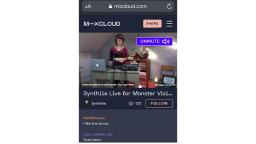
Once you've set it all up, you need to choose the platform to stream on. Twitch and Mixcloud Live are popular for music streams. Other platforms include Facebook Live, Youtube Live, Zoom and Hopin. It's really worth looking into the right one for you to avoid getting shut down for copyright infringement. Once you've chosen your platform, you'll need to link it to your OBS with a unique stream key that needs to be re-generated every time you start a new show. Lorraine Baker, recommends hosting a website to increase accessibility for punters:
“Having your own website makes it flow better if you have more than one 'stage'. You'll need to keep an eye on the traffic so it doesn't crash. If you just use a streaming platform then the different stages aren't always obvious to the viewer.”
“Mixcloud is good because your subscription covers royalties for the artists you play, so you won't get shut down for copyright infringement. Twitch is reliable, too. If Facebook or Youtube flags you then they can block you from posting for an hour, which will really ruin a live festival.” - Ru Brooks.
7. Budget.
Do you have one? Are you going to pay your performers? Remember they're professionals, and their time is precious. If this isn't possible, consider setting up a Patreon to allow punters to donate if they can afford it, or even a pay per view page.
You might need to invest in some new technology, like an SSD card or an external mic. If you're raising money for charity it's good to start a fundraising page. Annabelle explains how to monetise an event without alienating your viewers:
“Our audience loves the real-life Social Club because it's warm and welcoming. I wanted everyone to be able to enjoy it, so I'm looking at the livestream like a street show- if you can't afford to give anything, then this is our gift to you.
"But if you enjoyed the show and you've got some spare cash, buy us a coffee, or pay what you would if you came to see us in real life. When we tried to set up a Paypal link you could see the yellow 'pay now' button flashing at the bottom, and it just looked really cold, like you were buying something on eBay or Amazon.
"So we made a Paypal.me and personalised it, so it's brighter and it says thank you. We wanted to keep that personal contact with people.”
8. Artists.
Ideally, you'll have someone looking after the artists, just like at a real festival. Depending on how ambitious you've been, if you're running the stream it's going to be a lot of extra work to then have to coordinate the acts. Consider creating a backstage artist area (i.e. a Zoom meeting) where they can all hang out and give each other feedback. Lorraine and Merlin talk us through artist liaison and management:
“The key to having a lot of acts is a bloody good spreadsheet! You also have to remember that your artists have very different levels of software competency, so you need to give very clear instructions, and I had my stage managers give the acts their unique stream key just before each set.” - Lorraine Baker.
“We pre-recorded everything, so I sent a brief asking everyone to email me a two minute performance with no talking and send their music files separately. Then I edited them together.” - Merlin Bolton-Smith.
9. Livestream.
You've planned it all out, it's ready to go and now you just need to figure out the livestream! It's a good idea to do a practice run beforehand to troubleshoot any issues. When you start “Live streaming is like filming with animals, it’s absolutely ridiculous, you don’t know what's gonna happen. Pre-recording is a way of using quality control. You can put more attention into the graphics and the informational content.We had a separate system for streaming, one for social media and then another one so we could see what the audience was seeing and fix any problems immediately.” - Simon Clarke.
“I streamed everything live except a couple of acts because I wanted as much of a real festival vibe as possible. I wanted the viewer to be there in that moment with all of our acts.” - Lorraine Baker.
The entertainment industry is having to transform to sustain itself, and the transition period is bumpy and time consuming. As we emerge from the depths of a global pandemic, things won't just go back to normal. But already we're finding new and innovative ways to survive and grow and, as Annabelle says, “we're all coming together to help one another and I think that's the way we'll stay strong and get through this”. Don't panic if everything doesn't go to plan straight away. Just like a real event, there's bound to be hiccups. Keep a record of any problems you have so you can iron them out for next time. Be sure to touch base with your artists and gather feedback from the audience and, most of all, have fun. You're running a festival, not a Monday morning webinar for the 6th International Conference on Roundabouts.
Commission Mission was created by Young Guns Network and London In Stereo to commission 20 new and experienced freelance writers to create articles to inspire, inform and entertain young people in the music industry who are struggling during Covid-19.
The supporters who made this project possible were Association of Independent Music, London In Stereo, Musicians Union, Motive Unknown, PPL, Remi Harris Consulting, Small Green Shoots, Young Guns Network, Youth Music.
